https://www.youtube.com/watch?v=KgmJg5PSifw
How to Solve a 5x5x5 Rubik's Cube - Part 4 - Parity Errors
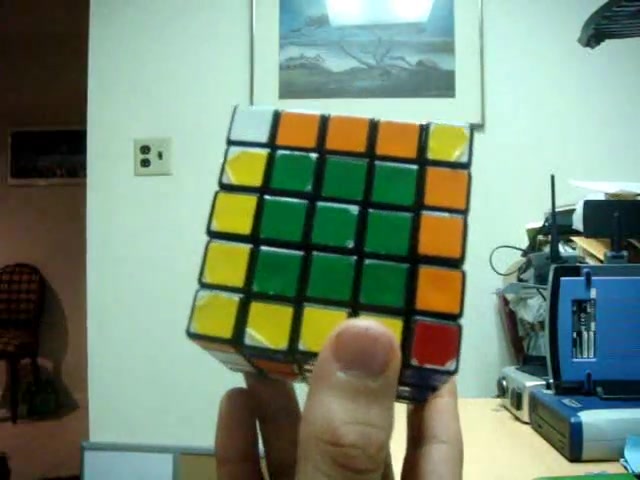
Welcome to the final part four of my tutorial on how to solve a five by five , Rubik's cube professor .
Since you have now paired up as many edges as possible without any algorithms , we must now determine whether or not we have a parody error .
If you do not have a parody error , you will have a cube that looks like the one I am holding where all of the edge pieces should be matched up properly and you can therefore solve the cube exactly like a three by three .
However , the chances are very good that you will encounter a parity error when solving the cube .
And so learning how to fix these errors is very important .
You can tell that you have a parity error if you have two or less incomplete trudge pieces with no remaining unmatched pairs .
If you have three or more mixed up trudges , you can keep on edge pairing until you have two or less .
In which case , you would recognize that you have a parity error or until you have matched up every single edge piece and have a cube like this one .
There are algorithms for every different parody case .
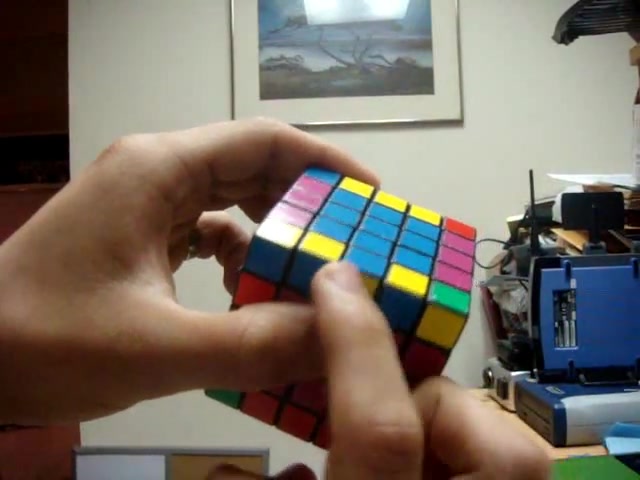
However , I assure you that it is possible to fix the edge parity errors with two algorithms which is all I require you learn once you have done so and fixed all the parity errors .
The cube is identical to a three by three , all right .
So to start off , there are three main types of parity errors .
I'd like to discuss .
The first one is a case where there is only that one middle edge piece that is flipped over .
This is comparable to the case that we see in the four by four cube where this piece has been flipped over and we need to correct it in order to complete the cross .
So you should already know the algorithm I'm going to use in order to correct this error .
However , I'm going to go through it step by step .
We must first position that flipped edge piece on the top layer directly in front of us as it is positioned here .
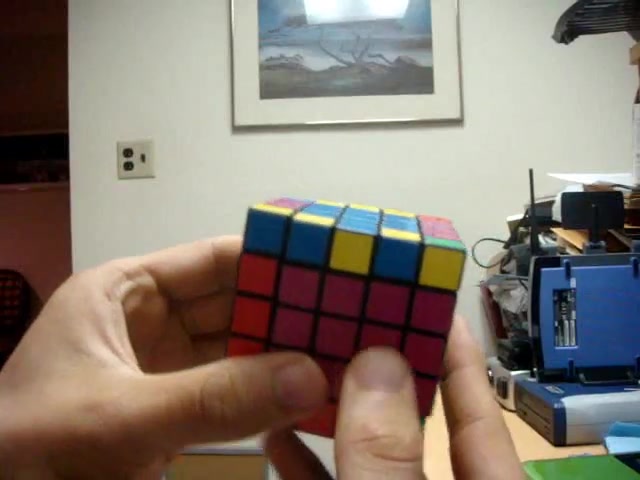
The move we are then going to use is both right faces 180 degrees , the back face 100 and 80 degrees , the up face 100 and 80 degrees , both left faces clockwise , the up face 100 and 80 degrees .
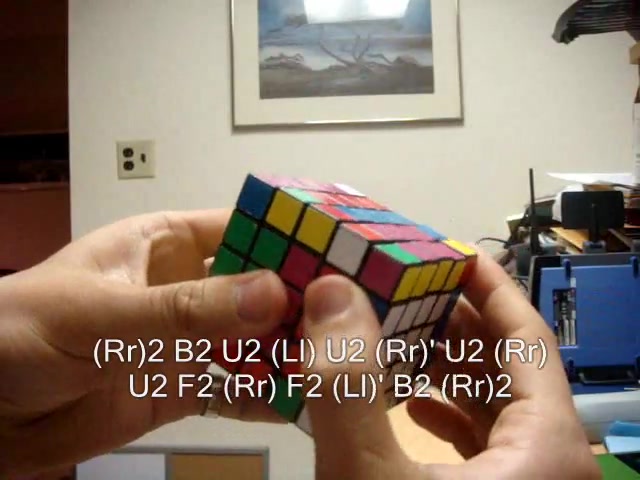
Both right faces counterclockwise , the up face 100 and 80 degrees , both right faces clockwise , the up face 100 and 80 degrees , the front face 180 degrees , both right faces clockwise , the front face 100 and 80 degrees , both left faces counter clockwise , the back face , 100 and 80 degrees and both right faces 180 degrees .
And as you'll see that parity error , which we had that piece flipped is now corrected .
So now all of the T dredges are complete and we can solve this cube exactly like a three by three .
So now let's go over the next type of parity error .
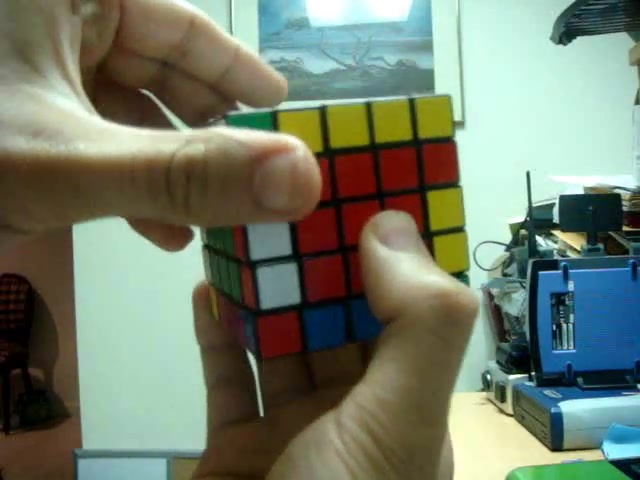
You will see another common parody error you'll see is one where you have two outer edge pieces which have switched places .
This outer red white piece needs to come over here to complete the red white edge .
While this outer yellow blue piece needs to go over there to complete the yellow blue edge .
In order to fix this parity error , you must first make sure that these two single outer edge pieces are on the same layer .
If you have them on opposite or different layers like that , you need to first arrange them so that they are in the same layer before continuing .
Once they are on the same layer , we want to position them on the top face all the way to the right of the tred pieces that they're on .
So we wanted to look just like that .
We're then going to perform the following algorithm in order to correct the parity error .
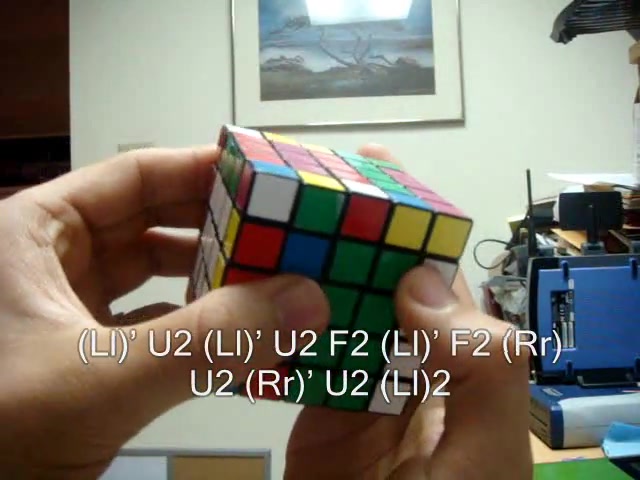
So we want to turn both left faces counter clockwise , the up face 100 and 80 degrees , both left faces counter clockwise .
The up face 100 and 80 degrees , the front face 100 and 80 degrees .
Both left faces counter clockwise , the front face 180 degrees .
Both right faces clockwise , the top face 100 and 80 degrees .
Both right faces counter clockwise , the up face 100 and 80 degrees and both left faces 180 degrees .
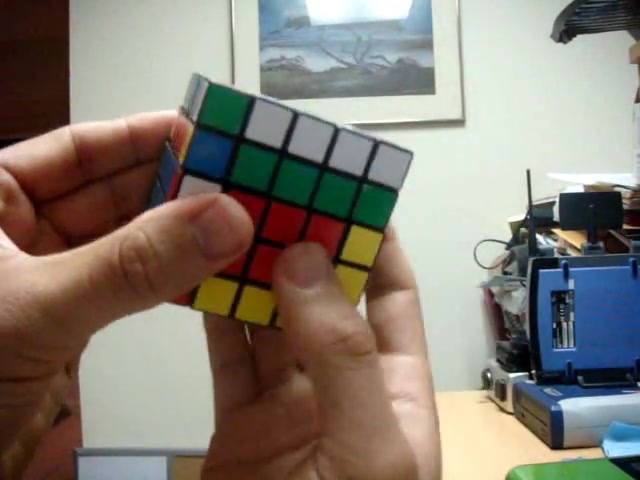
And as you'll see that parody error in which these pieces had been swapped that's now corrected .
And this cube can be solved exactly like a three by three .
The last type of parity error you'll see is one where we basically have the previous two parody errors together or even the same parody error two or more times making what looks like a randomized or sometimes what's referred to as a checkerboard pattern .
This type of parity error is less common , but it's a little bit more involved .
However , it can be corrected using only one algorithm , the one which I used for the previous parody case to swap those two outer edge pieces .
So we don't have to use that really long algorithm which I used in the first case to flip that one middle edge piece over .
However , you can use it if you want to .
The parody case I have on the left here is a little easier since it already has one edge pair .
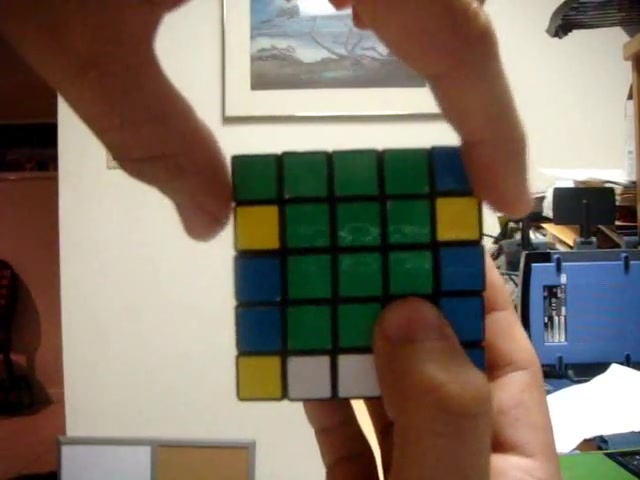
While the parody case on the right here is a little trickier since it has no edge pieces lined up at all .
What we always want to do is to get the edge pieces so that they are paired up with one another by pairing the edge pieces , we will eventually arrange them so that they look like the previous parody error .
Since the parity error on the left is a little easier .
I'm going to go over that one first .
OK .
So as you'll see , we already have an edge pair here for the red blue .
So we want to try to get an edge pair for the yellow blue to do that .
We need to match these two pieces .
But we can't do that when they have the same orientation to switch the orientation .
I'm going to bring this piece down , put that piece over there and then bring this piece back up .
Now that they have opposite orientation , we can match them up to match them up .
I'm going to switch these two outer edge pieces by using the algorithm we use in the previous parity case .
So we need to put these outer edge pieces on the top face all the way to the right .
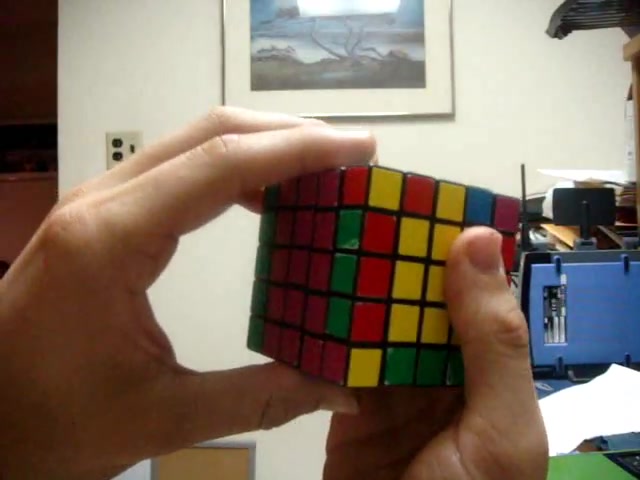
Now , we can perform the following algorithm .
Both left faces counter clockwise , the up face , 180 degrees , both left faces counter clockwise , the up face again , 180 degrees , the front face , 180 degrees , both left faces counter clockwise , the front face , 180 degrees both right faces clockwise , the up face 100 and 80 degrees , both right faces counter clockwise , the up face 100 and 80 degrees and both left faces 180 degrees .
So as you'll see , we now have two edge pairs which are already matched .
So now what we do is this is the exact same thing that we had the previous parity case .
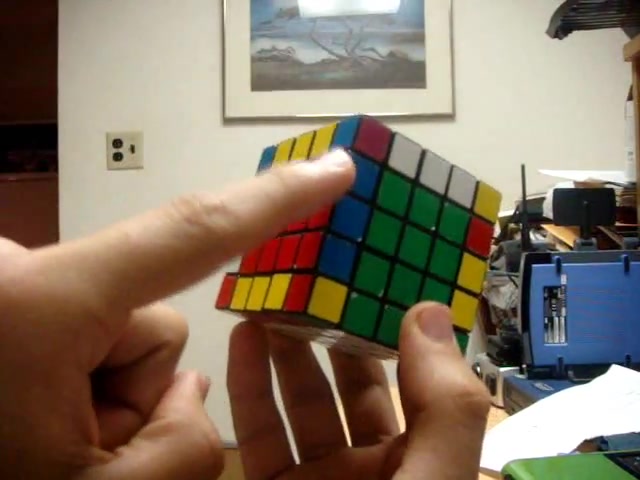
So we all we have to do is align them so that both of these single outer edge pieces are in the same layer .
And then we perform the algorithm again by holding them on the right here .
So it's both left faces counterclockwise up face 100 and 80 degrees .
Both left faces counter clockwise up face 100 and 80 degrees .
The front face 100 and 80 degrees , both left faces counter clockwise , the front face , 100 and 80 degrees , both right faces clockwise , the up face 100 and 80 degrees , both right faces counter clockwise , the up face 180 degrees and both left faces 180 degrees .
And as you'll see that parity error that we had there is now corrected .
All right .
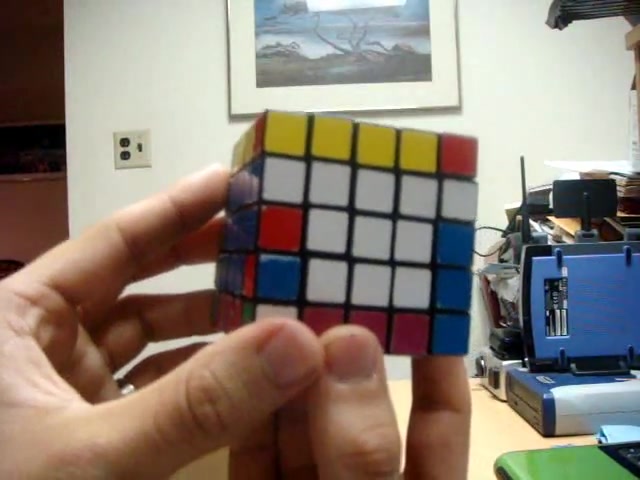
This last parody case where there are no matched up edge pieces is very similar to the other parody case , but you must perform the algorithm three times instead of two , I will quickly show you how to correct it .
However , if you can fix the previous case , you can pretty much fix any parity error .
You will see what we want to do is make sure that these two pieces have opposite orientations so that we can match them .
And then we're going to perform the algorithm , we then want to match these two pieces up by doing the same thing .
So we put that piece all the way on the right on top .
Then all we have to do is do the move one more time by placing these two outer pieces on the same layer , then we could perform the algorithm .
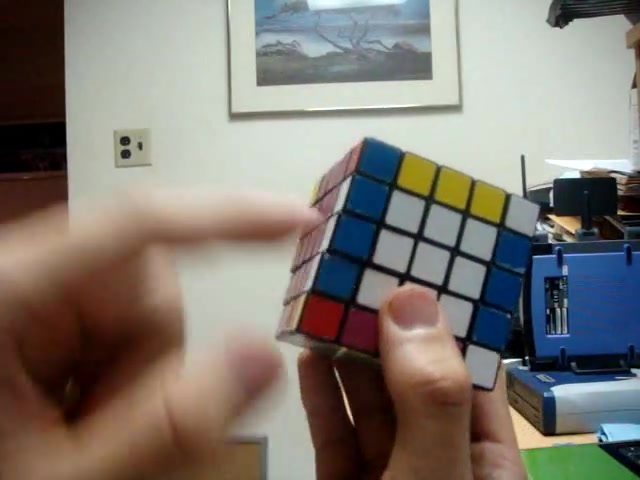
All right .
So now you'll see that the parity case has been fixed entirely with those algorithms .
You should now be able to correct any parity case .
You may see allowing you to solve the cube exactly like a three by three , just like I demonstrated in the four by four tutorial step three .
If you have any questions or problems , please comment on the video and I'll be glad to help you out .
I hope you found the tutorial helpful and thanks for watching .
Are you looking for a way to reach a wider audience and get more views on your videos?
Our innovative video to text transcribing service can help you do just that.
We provide accurate transcriptions of your videos along with visual content that will help you attract new viewers and keep them engaged. Plus, our data analytics and ad campaign tools can help you monetize your content and maximize your revenue.
Let's partner up and take your video content to the next level!
Contact us today to learn more.